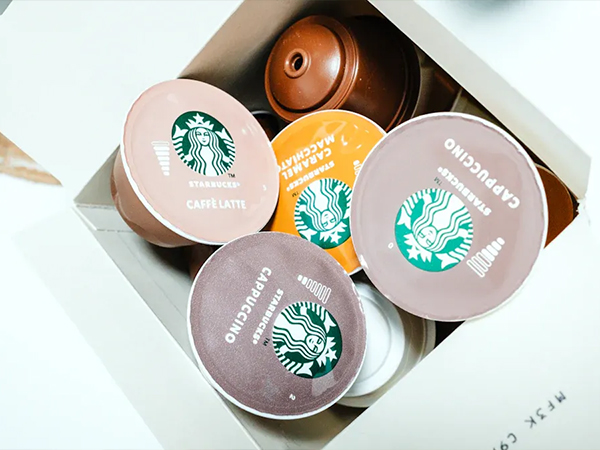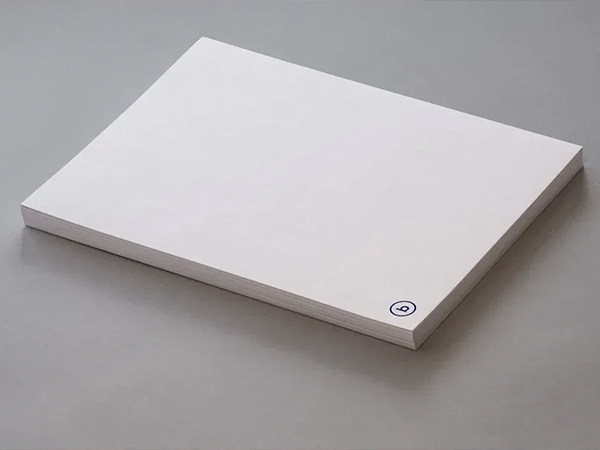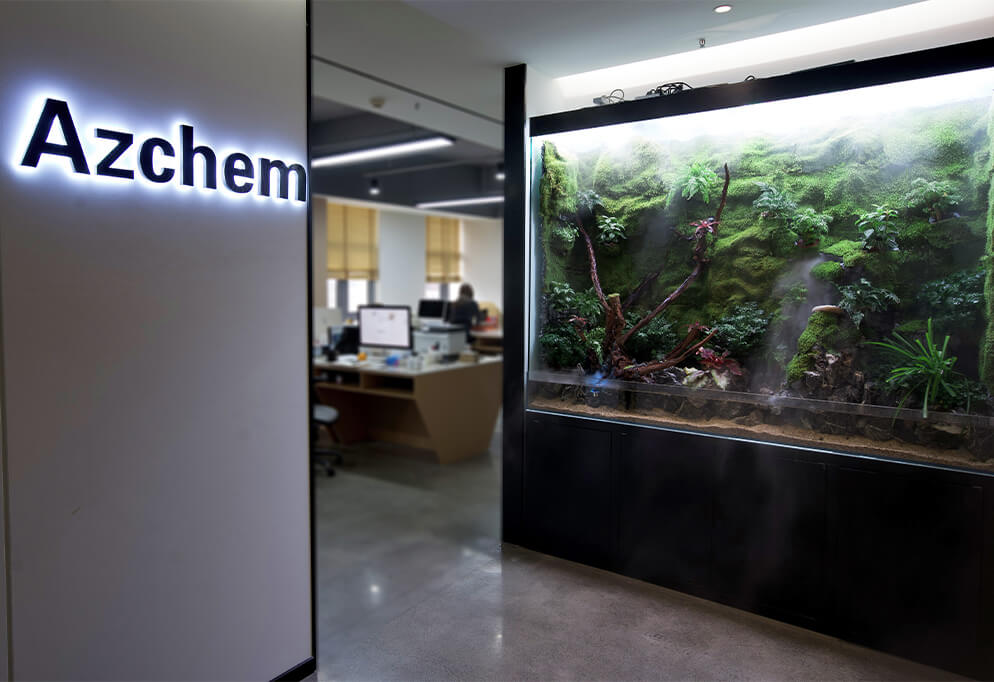
Paper barrier coating technology plays a vital role in preserving food quality by shielding packaging from grease and moisture. Untreated paper allows oils and water to seep through because its porous structure cannot block these substances. Coatings form a protective layer, preventing leaks and product spoilage. Over the past five years, global demand for sustainable and recyclable packaging has surged, driven by consumer awareness, new regulations, and the food industry’s push for high-performance, eco-friendly solutions. Packaging professionals now view barrier coatings as essential for reliable, sustainable food packaging.
Key Takeaways
- Paper barrier coatings protect food packaging by blocking grease, moisture, and oxygen, keeping food fresh and safe.
- Untreated paper is porous and allows oils and water to pass through, causing stains, leaks, and food spoilage.
- Coatings use physical films and chemical properties to resist grease and moisture, often combining natural and synthetic materials for better performance.
- Bio-based and nanoparticle-enhanced coatings offer sustainable, high-performing options that reduce plastic use and support recycling.
- Tests like MVTR, Kit Test, and Cobb Test measure how well coatings block moisture and grease, helping manufacturers ensure quality.
- Real-world trials confirm coating effectiveness under actual conditions, preventing leaks, sogginess, and packaging damage.
- Barrier coatings enable recyclable fiber-based packaging, supporting a circular economy and reducing plastic waste.
- Regulatory compliance ensures coatings are safe for food contact, protecting consumers and building trust in packaging.
Untreated Paper

Porosity
Untreated paper contains a network of tiny fibers and gaps. These spaces create a porous structure. Liquids and gases can move through these pores with ease. The size and distribution of the pores depend on the type of pulp and the manufacturing process. Most food packaging papers have visible pores under a microscope. These pores allow substances like oil and water to pass through.
Note: Porosity makes untreated paper unsuitable for packaging foods that contain moisture or grease.
A simple test can show this property. Place a drop of water on plain paper. The water spreads and soaks through quickly. This demonstrates how easily liquids can penetrate untreated paper.
Grease and Moisture Risks
Grease and moisture present major challenges for food packaging. When paper lacks a protective coating, oils from foods like pizza or pastries seep through the packaging. Moisture from products such as fresh produce or frozen foods also moves through untreated paper. This transfer can weaken the paper and cause leaks.
- Grease stains make packaging look unappealing.
- Moisture can cause the paper to tear or lose shape.
- Both grease and water can escape, leading to messes during transport.
Untreated paper cannot block these substances. As a result, food packaging fails to protect both the product and the consumer.
Food Quality Impact
The movement of grease and moisture through packaging affects food quality. When oils escape, foods may dry out or lose flavor. Moisture loss can make baked goods stale. In some cases, outside moisture enters the package, causing sogginess or spoilage.
| Risk Factor | Effect on Food | Effect on Packaging |
|---|---|---|
|
Grease Transfer |
Loss of flavor, dryness |
Stains, weakened paper |
|
Moisture Loss |
Staleness, hardening |
Brittleness, tearing |
|
Moisture Gain |
Sogginess, spoilage |
Warping, mold growth |
Food safety can also suffer. Moisture can carry bacteria or mold into the package. Grease can break down the paper, creating holes or weak spots. These problems highlight the need for advanced solutions like paper barrier coating to maintain food quality and packaging integrity.
Paper Barrier Coating Mechanisms
Paper barrier coating technology uses both physical and chemical strategies to protect packaging from grease, moisture, and oxygen. These coatings create a shield on the paper surface, blocking unwanted substances and preserving food quality. Manufacturers often select materials and methods based on the specific needs of the packaged product.
Grease Resistance
Surface Barriers
Surface barriers form the first line of defense against grease. These coatings fill the pores in the paper and create a continuous film. This film prevents oils and fats from seeping through the packaging. Many coatings use biodegradable polymers or modified starches to achieve this effect. The smooth, sealed surface stops grease from staining or weakening the paper.
A novel laboratory method evaluates grease resistance by applying dyed oil to coated paper. The dyed oil highlights any defects, such as pinholes or cracks, by creating a visible contrast. Image analysis then measures the number and size of these defects. This approach provides accurate and fast results, helping manufacturers improve the quality of water-based barrier coatings.
Oil Repellency
Oil repellency depends on the chemical structure of the coating. Some coatings use hydrophobic molecules that repel oil and prevent it from soaking into the paper. Others use blends of natural and synthetic materials to increase resistance. For example, poly(butylene adipate-co-terephthalate) (PBAT) blended with lignin creates a strong oil barrier. When lignin is esterified with fatty acid chains, it becomes more hydrophobic and disperses better in PBAT. This combination improves oil resistance and makes the coating more sustainable.
Moisture Resistance
Water Vapor Barriers
Water vapor barriers stop moisture from moving through the paper. These coatings use materials that block water molecules, keeping food dry and fresh. PBAT, when combined with lignin and nanoparticles like titanium dioxide (TiO2), forms a green composite that enhances water resistance. The blend creates a dense layer that water vapor cannot easily penetrate.
Hydrophobicity
Hydrophobicity refers to the ability of a surface to repel water. Coatings with high hydrophobicity prevent water droplets from soaking into the paper. Esterified lignin, when added to PBAT, increases the hydrophobic nature of the coating. This improvement helps maintain the strength and shape of the packaging, even in humid environments.
Oxygen and Contaminant Barriers
Oxygen and other contaminants can spoil food and reduce shelf life. Paper barrier coating technology addresses this risk by using dense films and active ingredients. Lignin-zinc oxide (ZnO) hybrid nanoparticles, when incorporated into PBAT, create nanocomposite films with enhanced oxygen barrier properties. These films also provide antibacterial benefits, making them suitable for active food packaging. By blocking oxygen and contaminants, these coatings help preserve food safety and quality.
Tip: Choosing the right combination of polymers, nanoparticles, and natural additives can significantly improve the performance of paper barrier coatings. Sustainable options like PBAT-lignin blends not only protect food but also support environmental goals.
Types of Paper Barrier Coating
Bio-Based and Biodegradable
Bio-based and biodegradable coatings offer a sustainable approach to food packaging. These coatings use materials from renewable sources. Common sources include lipids, proteins, polysaccharides, agricultural waste, and bio-based polyesters. By using these materials, manufacturers reduce reliance on petroleum-based products.
Many companies choose bio-based coatings to align with green chemistry principles. These coatings can improve water vapor and oxygen barriers, mechanical strength, and antimicrobial properties. They help make paper barrier coating solutions more environmentally friendly.
However, bio-based and biodegradable coatings also face some challenges. Some biodegradable polymers do not perform as well as petroleum-based polymers. They may allow more water vapor or oxygen to pass through. Modifying these coatings to improve performance can sometimes reduce their biodegradability. Large-scale production and maintaining coating integrity, such as preventing delamination or ensuring heat-sealability, can also be difficult. There are also concerns about the migration of coating materials into food.
| Aspect | Environmental Benefits | Limitations |
|---|---|---|
|
Source Materials |
Derived from renewable bio-based materials such as lipids, proteins, polysaccharides, agricultural waste, and polyesters, reducing reliance on petroleum. |
Some biodegradable polymers underperform compared to petroleum-based polymers in barrier properties (water vapor, oxygen). |
|
Barrier Properties |
Aim to improve water vapor and oxygen barrier, mechanical strength, surface characteristics, and antimicrobial properties, enhancing paper packaging sustainability. |
Performance-enhancing modifications may compromise biodegradability. |
|
Sustainability Considerations |
Align with green chemistry principles and promote sustainability in food packaging applications. |
Challenges in large-scale fabrication and maintaining coating integrity (delamination, heat-sealability) during use. |
|
Food Safety |
Potential to reduce environmental impact of packaging waste. |
Concerns about migration of coating materials into food during use. |
Note: Bio-based and biodegradable coatings play a key role in the shift toward sustainable packaging. They help reduce environmental impact, but manufacturers must balance performance and safety.
Nanoparticle-Enhanced
Nanoparticle-enhanced coatings represent a new frontier in food packaging technology. Scientists add nanoparticles to traditional coatings to improve barrier properties. These tiny particles, often less than 100 nanometers in size, can block grease, moisture, oxygen, and even bacteria more effectively than conventional materials.
Nanoparticles work by filling the microscopic gaps in paper fibers. This creates a denser and more uniform barrier. As a result, the coated paper resists the passage of unwanted substances. Common nanoparticles used in paper barrier coating include:
- Clay nanoparticles: These particles create a tortuous path for water vapor and gases. They slow down the movement of molecules through the coating.
- Silica nanoparticles: Silica improves the mechanical strength and water resistance of the coating.
- Zinc oxide (ZnO) nanoparticles: ZnO offers both oxygen barrier and antimicrobial properties. It helps keep food fresh and safe.
- Titanium dioxide (TiO₂) nanoparticles: TiO₂ increases the opacity and UV resistance of the packaging. It also contributes to water and grease resistance.
Note: The size and shape of nanoparticles influence how well they block grease and moisture. Smaller particles can fill more gaps, but they must disperse evenly to avoid weak spots.
Researchers have found that combining nanoparticles with bio-based polymers can create coatings that are both sustainable and high-performing. For example, a blend of lignin and ZnO nanoparticles in a biodegradable polymer matrix can provide strong barriers against oxygen and bacteria. This approach supports the shift toward eco-friendly packaging.
Nanoparticle-enhanced coatings also offer flexibility in design. Manufacturers can adjust the type and amount of nanoparticles to meet specific needs. Some coatings focus on water resistance, while others target grease or oxygen. This customization allows food packaging to match the requirements of different products.
A table below summarizes the benefits of common nanoparticles in paper barrier coating:
| Nanoparticle Type | Main Benefit | Additional Feature |
|---|---|---|
|
Clay |
Water vapor barrier |
Gas barrier |
|
Silica |
Mechanical strength |
Water resistance |
|
Zinc oxide (ZnO) |
Oxygen barrier |
Antimicrobial activity |
|
Titanium dioxide |
UV resistance |
Grease and water barrier |
Safety remains a key concern with nanoparticles. Manufacturers must ensure that nanoparticles do not migrate into food. Regulatory agencies require thorough testing before these coatings reach the market.
Nanoparticle-enhanced coatings continue to evolve. They help the food industry achieve better protection, longer shelf life, and more sustainable solutions.
Performance Metrics
MVTR
MVTR stands for Moisture Vapor Transmission Rate. This test measures how much water vapor passes through a material over a set period. In food packaging, MVTR helps determine how well a coating protects food from moisture. A lower MVTR means less moisture can get through, which keeps food fresh and prevents sogginess.
Manufacturers use MVTR to compare the effectiveness of different coatings. For example, a water-based coating called HYDRO-PAK + MVTR 4040 achieves an MVTR of 7 g/m²/day. This value shows strong resistance to moisture. In contrast, a study on biodegradable paper cups coated with whey protein isolate and rice bran wax found an MVTR of about 19.8 g/m²/day. Both coatings perform much better than uncoated paper, which usually has even higher MVTR values. These results show that coated paper typically achieves MVTR values between 7 and 20 g/m²/day, while uncoated paper allows more moisture to pass through.
| Coating/Product | MVTR (g/m²/day) |
|---|---|
|
HYDRO-PAK + MVTR 4040 coating |
7 |
|
Whey protein/rice bran wax coated cup |
19.8 |
MVTR is important for foods that need to stay dry, such as crackers or cereals. A low MVTR helps extend shelf life and maintain product quality.
Kit Test
The Kit Test measures how well a paper surface resists grease and oil. In this test, technicians apply a series of solutions with increasing oil content to the coated paper. The highest-numbered solution that does not stain or soak through the paper determines the “kit rating.” A higher kit rating means better grease resistance.
Food packaging for items like burgers, pastries, or fried foods often requires a high kit rating. This test helps manufacturers choose the right coating for greasy foods. A strong kit rating ensures that packaging stays clean and does not leak oil, which protects both the food and the consumer.
Cobb Test
The Cobb Test evaluates how much water a paper surface absorbs over a specific time. Technicians place a measured amount of water on the paper and then weigh how much water the paper absorbs. The result, called the Cobb value, is given in grams per square meter (g/m²). Lower Cobb values mean better water resistance.
This test is important for packaging that faces wet conditions, such as frozen foods or refrigerated items. A low Cobb value helps prevent the paper from becoming soggy or losing strength. Regulatory agencies often require certain Cobb values for food packaging to ensure safety and durability.
Together, MVTR, Kit Test, and Cobb Test provide a complete picture of how well a coating protects food packaging from moisture, grease, and water. These metrics help manufacturers meet quality standards and keep food safe.
Real-World Performance
Laboratory tests like MVTR, Kit Test, and Cobb Test provide valuable data. However, real-world performance often reveals how coatings behave under actual conditions. Packaging professionals look beyond numbers to see how coated paper performs during shipping, storage, and consumer use.
Food packaging faces many challenges outside the lab. Temperature changes, humidity, and handling can affect barrier properties. For example, a sandwich wrapper may pass the Kit Test in a controlled setting. In a busy restaurant, the same wrapper might encounter hot, greasy food and rough handling. Only real-world trials can show if the coating prevents leaks and keeps the packaging intact.
Manufacturers often conduct field trials to evaluate coated paper. They pack real food products and monitor them through the supply chain. These trials check for:
- Grease stains or leaks after transport
- Moisture damage during refrigeration or freezing
- Changes in food texture or freshness
- Packaging strength after stacking or compression
A table below summarizes common real-world challenges and how barrier coatings address them:
| Challenge | Real-World Example | Barrier Coating Benefit |
|---|---|---|
|
Grease migration |
Pizza box in delivery |
Prevents oil stains and leaks |
|
Moisture absorption |
Frozen food packaging |
Maintains paper strength |
|
Oxygen exposure |
Snack bags on shelves |
Extends shelf life |
|
Physical handling stress |
Takeout containers |
Reduces tearing and warping |
Tip: Field testing helps companies identify weak spots in their packaging. They can adjust the coating formula or application process to improve performance.
Regulatory compliance also depends on real-world results. Agencies may require proof that packaging protects food throughout its intended use. Companies must document that their coatings meet safety and performance standards, not just in the lab but in daily operations.
Consumer feedback plays a key role. Shoppers expect packaging to keep food fresh and prevent messes. Negative experiences, such as soggy boxes or greasy hands, can hurt a brand’s reputation. Companies use surveys and product returns to gather data on packaging performance.
Sustainability

Circular Economy
A circular economy aims to keep materials in use for as long as possible. In the packaging industry, this approach reduces waste and conserves resources. Fiber-based packaging, such as paper, fits well into this model because it comes from renewable sources and can be recycled many times.
Paper barrier coatings play a key role in supporting a circular economy. They allow manufacturers to replace plastic packaging with recyclable, fiber-based alternatives. These coatings provide essential protection against water, oxygen, oil, grease, and even UV light. Without these barriers, paper alone cannot protect food or other products as effectively as plastic.
The shift toward “paperization” helps reduce plastic waste. Many companies now choose fiber-based packaging because it fits into established recycling systems. Barrier coatings maintain the strength and shelf life of these packages, making them a practical choice for many products.
Manufacturers design barrier coatings to work with existing recycling processes. They focus on repulpability, which means the coated paper can break down and mix with other paper during recycling. This ensures that the packaging does not disrupt recycling streams.
Ongoing research and development aim to improve both the performance and sustainability of barrier coatings. Scientists look for ways to make coatings that protect products while also supporting recycling and reuse. These efforts help expand the range of products that can use recyclable fiber-based packaging.
Note: By enabling more types of packaging to enter recycling streams, barrier coatings help drive the packaging industry toward a circular economy. This reduces plastic dependency and supports a more sustainable future.
Key ways barrier coatings support a circular economy:
- Enable the use of renewable, recyclable fiber-based packaging instead of plastic.
- Provide essential barrier properties to maintain product quality and shelf life.
- Support the “paperization” trend, reducing plastic waste.
- Ensure compatibility with existing recycling processes.
- Encourage ongoing innovation for better performance and sustainability.
Regulatory Compliance
Regulatory compliance ensures that food packaging materials protect public health and meet legal standards. In the United States, the Food and Drug Administration (FDA) sets strict rules for coatings and adhesives used in paper and paperboard that come into contact with food. These rules appear in Title 21 of the Code of Federal Regulations (CFR), specifically Parts 174, 175, and 176. Manufacturers must follow these regulations to confirm that their packaging is safe for consumers.
The table below summarizes key regulatory aspects for food-contact paper coatings in the US and the European Union:
| Regulatory Aspect | Details |
|---|---|
|
Regulatory Framework |
US FDA regulations under 21 CFR Parts 174, 175, and 176 cover indirect food additives including coatings and adhesives for paper and paperboard. |
|
Substance Restrictions |
– Paraffin (synthetic): Oil content ≤ 2.5% of coating substance. |
|
Labeling Requirements |
– Adhesive containers must be labeled “Food-packaging adhesive.” |
|
Documentation |
Record-keeping to confirm substances are GRAS, approved, or safe without extractive limits for aqueous and fatty food contact. |
|
EU Regulatory Info |
No explicit regulatory requirements for paper barrier coatings in food contact applications found in the retrieved documents. |
The FDA restricts certain substances to protect consumers. For example, synthetic paraffin must not exceed 2.5% oil content in the coating. Platinum in siloxanes and silicones must stay below 150 parts per million. The FDA bans BPA-based epoxy resins in coatings for infant formula packaging. Other limits apply to alkyl ketene dimers, defoaming agents, slimicides, and sodium nitrate-urea complexes. These restrictions help prevent harmful chemicals from migrating into food.
Labeling also plays a crucial role. Adhesive containers must display the phrase “Food-packaging adhesive.” Some additives, such as chromium complexes and slimicides, require clear usage directions on the label. These instructions ensure that manufacturers use the correct amounts and apply coatings safely.
Documentation supports regulatory compliance. Companies must keep records to show that all substances used are either generally recognized as safe (GRAS), specifically approved, or safe for use without extractive limits. This record-keeping helps during inspections and audits.
In the European Union, no explicit regulatory requirements for paper barrier coatings in food contact applications appear in the available documents. However, manufacturers often follow general food safety laws and best practices to ensure consumer protection.
Regulatory compliance protects consumers and builds trust in food packaging. Companies that follow these rules help ensure food safety and avoid costly recalls or legal issues.
Applications
Dry Foods
Dry foods such as crackers, cereals, and pasta require packaging that keeps moisture out. Even a small amount of water can cause these products to lose their crispness or spoil. Manufacturers often choose coated paper packaging for these foods. The coating acts as a barrier, blocking water vapor from entering the package. This helps maintain the texture and flavor of dry foods during storage and transport.
Packaging for dry foods must also resist dust and odors. Some coatings provide an extra layer of protection against external smells. This feature keeps the food tasting fresh. Many companies select coatings that allow the packaging to remain lightweight and easy to recycle.
Tip: For dry foods, a low Moisture Vapor Transmission Rate (MVTR) is essential. This metric shows how well the packaging keeps moisture away from the product.
Oily Foods
Oily foods like potato chips, nuts, and baked goods present unique challenges. Oils can seep through untreated paper, causing stains and weakening the package. Coated paper provides a strong barrier against grease. This prevents oil from leaking out and keeps the packaging clean.
Manufacturers test packaging for oily foods using the Kit Test. A high kit rating means the coating can resist even the greasiest foods. This is important for products that sit on store shelves for weeks. The right coating ensures that oil stays inside the package, protecting both the food and the consumer.
A table below shows common oily foods and their packaging needs:
| Food Type | Packaging Requirement |
|---|---|
|
Potato chips |
High grease resistance |
|
Nuts |
Oil and oxygen barrier |
|
Pastries |
Stain prevention |
Oily foods often need packaging that also blocks oxygen. This helps prevent rancidity and extends shelf life.
Frozen Foods
Frozen foods face different risks. Ice crystals and condensation can damage packaging and the food inside. Coated paper helps prevent water from soaking into the package when frozen foods thaw. This keeps the packaging strong and prevents leaks.
Frozen food packaging must also withstand low temperatures without cracking or losing its barrier properties. Some coatings are designed to stay flexible in the freezer. This ensures that the package protects the food from freezer burn and moisture loss.
Manufacturers often test frozen food packaging in real-world conditions. They check for leaks, sogginess, and changes in food quality after freezing and thawing. The right coating helps keep frozen foods safe and appealing until they reach the consumer.
Note: Choosing the correct coating for frozen foods can reduce food waste and improve customer satisfaction.
Healthcare Packaging
Healthcare packaging demands strict protection standards to ensure product safety and integrity. Medical devices, pharmaceuticals, and diagnostic kits often require packaging that blocks moisture, grease, and contaminants. Paper-based solutions have gained popularity in this field due to their sustainability and compatibility with recycling systems.
Manufacturers design healthcare packaging to maintain sterility and prevent contamination. Moisture can damage sensitive items such as test strips, wound dressings, and tablets. Grease or oils may also compromise the effectiveness of medical products. Barrier coatings help create a protective shield that keeps these hazards away from the contents.
A key advantage of coated paper packaging lies in its breathability. Some medical products, like sterilized instruments, need packaging that allows sterilizing gases to enter but blocks bacteria and moisture. Specialized coatings can achieve this balance. They provide a barrier against liquids and oils while permitting controlled airflow.
Healthcare packaging must also meet strict regulatory requirements. Agencies such as the FDA and the European Medicines Agency set guidelines for materials that contact medical products. Coatings used in healthcare packaging must not release harmful substances or interfere with the product’s function. Manufacturers conduct rigorous testing to ensure compliance with these standards.
Note: Reliable barrier coatings help prevent cross-contamination in hospitals and clinics. They support infection control by keeping medical supplies clean and dry.
Common healthcare packaging applications include:
- Blister packs for pills and capsules
- Sterile wraps for surgical instruments
- Pouches for diagnostic kits and swabs
- Medical trays for single-use devices
The table below highlights the main requirements for healthcare packaging and how barrier coatings address them:
| Requirement | Barrier Coating Benefit |
|---|---|
|
Moisture protection |
Prevents degradation of sensitive items |
|
Sterility maintenance |
Blocks bacteria and contaminants |
|
Mechanical strength |
Resists tearing and punctures |
|
Regulatory compliance |
Meets FDA and EMA standards |
Manufacturers continue to innovate in this area. They develop coatings that combine high performance with recyclability and compostability. These advances help healthcare providers reduce waste without sacrificing safety.
Benefits
Food Safety
Food safety stands as a top priority in food packaging. Coated paper packaging helps prevent contamination by blocking grease, moisture, and oxygen. These barriers stop bacteria and mold from entering the package. They also keep harmful substances from migrating into the food. When packaging resists grease and moisture, it reduces the risk of foodborne illness.
Manufacturers test coatings to ensure they meet strict safety standards. Regulatory agencies, such as the FDA, require proof that packaging materials do not release dangerous chemicals. Coated paper often passes these tests because it forms a strong shield. This protection helps keep food safe during transport, storage, and handling.
Tip: Always check for packaging that lists compliance with food safety regulations. This information shows that the product meets industry standards.
Shelf Life
Shelf life refers to how long food stays fresh and safe to eat. Coated paper packaging extends shelf life by blocking moisture, grease, and oxygen. These elements can cause food to spoil, lose flavor, or become stale. When packaging keeps out air and water, it slows down the growth of bacteria and mold.
A longer shelf life benefits both consumers and retailers. Shoppers get food that tastes better and lasts longer. Stores can keep products on shelves without worrying about spoilage. This reduces waste and saves money.
The table below shows how barrier coatings affect shelf life for different foods:
| Food Type | Shelf Life Without Coating | Shelf Life With Coating |
|---|---|---|
|
Crackers |
2 weeks |
4-6 weeks |
|
Potato chips |
1 week |
3-4 weeks |
|
Frozen meals |
1 month |
2-3 months |
Cost Efficiency
Cost efficiency matters to both manufacturers and consumers. Coated paper packaging can lower costs in several ways. First, it reduces food waste by keeping products fresh longer. Less spoilage means fewer returns and less money lost. Second, coated paper often weighs less than plastic or metal packaging. Lighter packaging cuts shipping costs and makes handling easier.
Manufacturers can also save money by using recyclable or compostable coatings. These materials may cost less to dispose of and can help companies avoid landfill fees. Some coatings allow for faster production speeds, which increases efficiency in the factory.
Note: Investing in high-quality barrier coatings can lead to long-term savings. Companies spend less on waste management and product recalls.
A summary of cost efficiency benefits:
- Reduces food waste and spoilage
- Lowers shipping and handling costs
- Supports recycling and composting programs
- Increases production speed and efficiency
Environmental Impact
Sustainable packaging choices have a direct effect on the environment. Companies that switch from plastic to fiber-based packaging help reduce plastic pollution. Paper packaging comes from renewable resources, such as managed forests. Trees absorb carbon dioxide as they grow, which helps lower greenhouse gas levels. When companies use recycled paper, they save energy and water compared to making new paper from raw materials.
Barrier coatings make paper packaging more useful for foods that need protection from grease and moisture. Traditional plastic coatings can make recycling difficult. Newer coatings use bio-based or water-based materials. These coatings break down more easily in recycling systems. Some even compost in industrial facilities, which helps return nutrients to the soil.
A table below shows the environmental benefits of coated paper packaging compared to plastic:
| Feature | Coated Paper Packaging | Plastic Packaging |
|---|---|---|
|
Renewable resource |
Yes |
No |
|
Recyclable |
Often |
Sometimes |
|
Compostable |
Sometimes |
Rarely |
|
Carbon footprint |
Lower |
Higher |
|
Plastic pollution |
None |
Yes |
Companies that choose recyclable or compostable coatings support a circular economy. They help keep materials in use and out of landfills.
Waste reduction is another important benefit. Paper packaging with the right barrier coating can replace single-use plastics in many applications. This change reduces the amount of plastic waste that ends up in oceans and landfills. When consumers recycle or compost coated paper, they help close the loop and reduce the need for new raw materials.
Manufacturers also focus on reducing the environmental impact during production. Many use water-based processes that release fewer harmful chemicals. Some coatings come from agricultural byproducts, which helps use resources more efficiently.
🌱 Key environmental benefits of coated paper packaging:
- Reduces plastic waste and pollution
- Supports recycling and composting
- Uses renewable and recycled materials
- Lowers greenhouse gas emissions
- Encourages responsible resource management
These benefits show why many companies and consumers prefer coated paper packaging. The right choice can protect food and the planet at the same time.
Paper barrier coatings help protect food packaging from grease and moisture. They support food safety, extend shelf life, and reduce waste. Choosing the right coating improves sustainability and packaging performance. Companies can explore new eco-friendly options to meet changing industry needs.
Sustainable packaging choices make a difference for both people and the planet.
FAQ
What is a paper barrier coating?
A paper barrier coating is a thin layer applied to paper packaging. It blocks grease, moisture, and gases. This coating helps protect food and keeps packaging strong.
Are paper barrier coatings safe for food contact?
Manufacturers design paper barrier coatings to meet strict food safety standards. Regulatory agencies like the FDA review these coatings. They ensure coatings do not release harmful substances into food.
Can coated paper packaging be recycled?
Most coated paper packaging can enter recycling streams. Some coatings use water-based or bio-based materials, which improve recyclability. Always check local recycling guidelines for specific instructions.
How do barrier coatings help the environment?
Barrier coatings allow companies to use more paper and less plastic. This switch reduces plastic waste and supports a circular economy. Many coatings use renewable or biodegradable materials.
What foods benefit most from barrier-coated paper?
Foods with high oil or moisture content, such as chips, pastries, and frozen meals, benefit most. These coatings keep food fresh and prevent leaks or stains.
Do barrier coatings affect the compostability of paper packaging?
Some barrier coatings are compostable, especially those made from bio-based materials. Others may limit compostability. Manufacturers often label compostable packaging for easy identification.
How do manufacturers test the effectiveness of barrier coatings?
Manufacturers use tests like MVTR, Kit Test, and Cobb Test. These tests measure resistance to moisture, grease, and water. Results help ensure the coating meets food packaging needs.
Are there regulations for paper barrier coatings in healthcare packaging?
Healthcare packaging must meet strict standards for safety and sterility. Agencies like the FDA and EMA set guidelines. Coatings must not release harmful chemicals or compromise product integrity.






